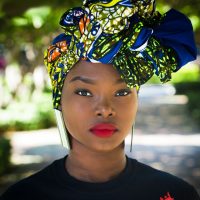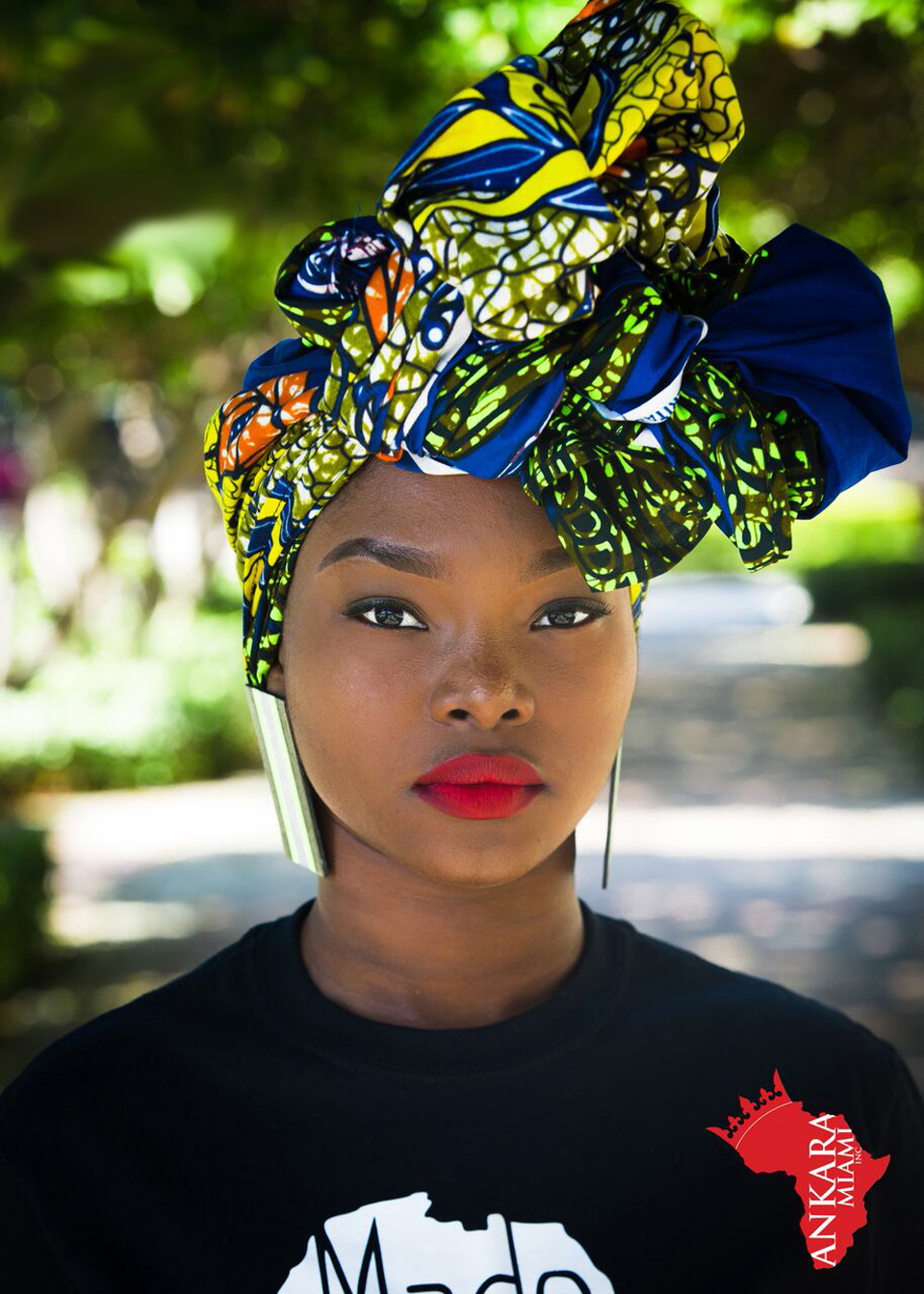Head Wraps

Editor’s Note: In 2016, ArtSpeak published a video interview with artist Firelei Báez, whose exhibition at the Perez Art Museum Miami (PAMM) featured large-scale portraits of Black women wearing headscarves. During the video interview, Ms. Báez discussed the historical significance of headscarves, noting that around the time of the Louisiana Purchase in 1804, AfroCreole women in Louisiana were forced to keep their heads covered. In resistance, the women adopted elaborate headscarves and created a subversive form of beauty. Once I became more attuned to headscarves, I began to notice their resurgence in contemporary society and asked Nyamekye Daniel to investigate.
When it comes to beauty, hair is one of the most, if not the most important element for Black women. In fact, there is an industry dedicated solely to Black haircare, which is projected to be worth more than $761 million in 2017, according to the market research firm Mintel. Nevertheless, a recent trend has many Black women opting to cover their hair.
With products ranging from hair extensions, wigs, natural hair products, various straighteners and more, women of African descent can create whatever look they desire. But some women are choosing to wear African head wraps for cultural identity and convenience purposes.
“I love that it’s so easy to put on and go. I love that I feel beautiful covered,” said Uber driver Crystal Hailstorks, who has a small collection of head wraps. “It’s sexy and liberating. It’s also good for bad hair days.”
Head wraps are large pieces of fabric, usually in bright colors and Afrocentric prints, worn over one’s head and tied above the forehead or on the side. In ancient Nubian and Egyptian art, there is evidence of head covers worn by royalty. Women and men in sub-Saharan Africa have been wearing head wraps since the 18th century. Artwork from the time also shows slaves wearing head wraps while working cotton and sugarcane fields on plantations in the Caribbean, according to Regis University and Metropolitan State University history professor, Beverly Chico.
Chico’s research confirms that head wraps came to America through slavery from Africa. In her book, Hats and Headwear Around the World: A Cultural Encyclopedia, she wrote that some scholars believe that head wraps were used during the trans-Atlantic transport of slaves, as a way to integrate tribes and/or reduce head lice.
Once in America, enslaved African women did not have the luxury of spending hours styling their hair, and some had to abide by dress code regulations.
During the Louisiana Purchase, AfroCreole slaves were forced to keep their heads covered by a law endorsed by Governor Esteban Rodriguez Miró, which stated that women of color, slave or free, should cover their heads with a knotted headdress, referred to as tignons, to refrain from “excessive attention to dress.”
Known as the “Tignon Law,” the regulation backfired when women designed decorative wraps shaped in artful designs, creating a fashion statement and outshining their Caucasian counterparts, according to a Louisiana State University study published by Ina J. Fandrich.
In 2015, Dominican-American artist, Firelei Báez, painted a group of pieces featuring elaborate headdresses, which she said was inspired by the Creole women’s triumph against the law.
Many of the women, interviewed for this story, were not aware of the history, or how it became a fashion statement, but all liked having the option.
In addition to convenience, some women wear the wraps as a form of cultural identity.
Former Miss Nigeria Florida, Evelyn Onyejuruwa, said she was never told about the history, but she started wearing the head wraps, known in Nigeria as “geles,” as a toddler.
For formal or special occasions, Nigerians traditionally wear custom-made clothes, and the women use the leftover fabric from the outfit to make geles, according to Onyejuruwa. Geles are a symbol of status and nobility. She also said authentic geles are made from handmade West African fabric called “ankara.”
“There are two types of geles; one made with heavier fabric for special occasions and one made of regular ankara for everyday wear,” Onyejuruwa said.
Onyejuruwa, who considers herself an African cultural ambassador, also has her own line of head wraps called “Ankara Delights.”
“Ankara Delights are mostly in demand during Black History Month and in the summer – when many natural hair events and music festivals take place,” said Onyejuruwa.
“Head wraps are more wearable than an outfit. It’s an easy way to make someone feel connected to their roots,” she said. “It’s cool as a fashion trend as long as it is credited back to where it’s from.”



